Ignasi Fina al Centre Cívic Sagrada Família
Ignasi Fina realitza una presentació durant la presentació del projecte Matheroes al públic del Centre Cívic Sagrada Família
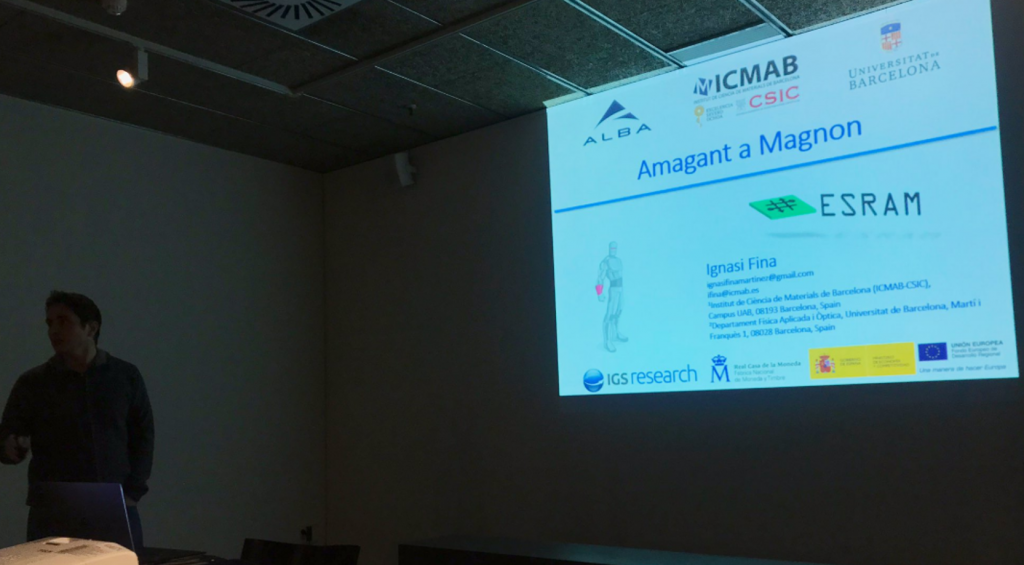
Ignasi Fina realitza una presentació durant la presentació del projecte Matheroes al públic del Centre Cívic Sagrada Família

Ignasi Fina gave two lectures about “Nanoscience and Nanotechnology” and “Information and communication technologies” at Universitat Catalana d’Estiud on August 22-23th.
See the event link: http://uce.cat/responsive/ctecnologia_Prada_2018.html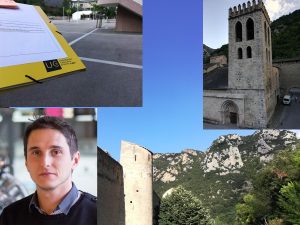
Guillermo Prieto, who did his bachelor thesis with Ignasi Fina working on ferroelectrics, got the maximum mark (10) with honors for his work “Electroresistance in non-tunnelling ferroelectric junctions”. The bachelor work was defended at Universitat de Barcelona. 
Our former Master student on Photovoltaic ferroelectric ; Sergio Gonzalez Casals, has accepted an offer to initiate his PhD on related topics at INL ( ) in France
) in France
Congratulations!

“NANOingeniería de ÓXIdos para el mayor aprovechamiento de la energía SOLar usando rutas no convencionales (NANOXISOL)” (Oxides nanoengineering for improvement of photovoltaic efficiency using non-conventional routes) proposed by Ignasi Fina has been awarded by Comfuturo program in its second edition.
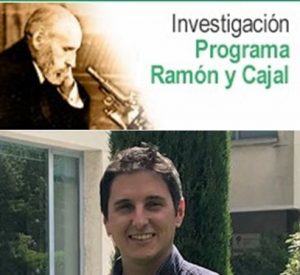 Our colleague Ignasi Fina got the prestigious Ramon y Cajal 5 years contract. Congratulations !
Our colleague Ignasi Fina got the prestigious Ramon y Cajal 5 years contract. Congratulations !
MULFOX group has been awarded with a MIT-Spain “La Caixa” Foundation Seed Fund. In a press release that took place on 18th April at Palau Macaya (Barcelona), the PI of the project (Ignasi Fina) was interviewed by local radio, and he commented on the new investigations on the use of semiconducting ferroelectrics for photoelectric applications that the funded project proposes. We hope fruitful collaboration with MIT.
Read the news appeared in the media:
 Great physicists: Sergio Gonzalez and Sara Ramió, have just enrolled our group. They will work on ferroelectric materials with Ignasi Fina.
Great physicists: Sergio Gonzalez and Sara Ramió, have just enrolled our group. They will work on ferroelectric materials with Ignasi Fina.
All the best for them!
PhD student Halyna Volkova is doing her PhD thesis in Université Paris-Saclay under the supervision of B. Dkhil and I.C. Infante. She will stay in our group working on growth and photovoltaic characterization of ferroelectric materials during 2 months (2018, January – March).
We hope you the best.

We are happy to announce that this year I. Fina from MULFOX and R. Jaramillo from Massachusetts Institute of Technology will start a new collaborative project funded by “la Caixa” focus on the investigation of new materials for photovoltaic applications.
Ignasi Fina will give an invited talk on Photoelectric effects in ferroelectric thin films (13th September of 2017) on the EMN MEETING ON EPITAXY in Barcelona.

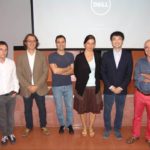
Fanmao Liu merited the Cum-Laude for his PhD defense on “Photoresponse of Ferroelectric BaTiO3 thins films”.
Congratulations, Fanmao!
Fanmao Liu, our fresh PhD, starts his professional carrier at SUN YAT-SEN UNIVERSITY in Guangzhou (China). Good luck and remember ICMAB ! “

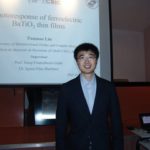
Today, Fanmao Liu has successfully defended his PhD thesis entitled “Photoresponse of ferroelectric BaTiO3 thin films” supervised by Prof. Fontcuberta and Dr. Fina. Congratulations for him and thanks to the members of the jury: Prof. Brahim Dkhil, Dr. Mariano Campoy, and Dr. Ingrid Cañero.
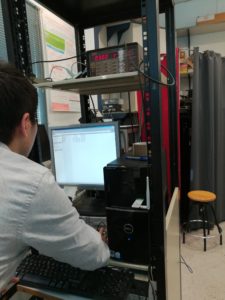
During these last 15 days our Dielectric Lab has been used by an external used in the framework of the NFFA European network. We are happy that a equipment that has been set by our group can be now used by Scientist and Industrial Researchers from all around Europe.
Greta Radaelli, Diego Gutiérrez, Mengdi Qian, Ignasi Fina, Florencio Sánchez, Lorenzo Baldrati, Jakoba Heidler, Cinthia Piamonteze, Riccardo Bertacco, and Josep Fontcuberta.
Adv. Electron. Mater. 2016, 2, 1600368.
In a radio interview (Pa Ciència la Nostra – Radio Sants) Ignasi Fina talks about the realisation of a memory device able to be connected to any PC via standard USB connection based on an antiferromagnetic material. The realisation of this proof of concept device might be an important step on for antiferromagnetic spintronics.
Link to the interview (catalan):
Demostration:
https://plus.google.com/+IgnasiFinaMartínez/posts/G77KS1htX49
M Lorenz, M S Ramachandra Rao, T Venkatesan, E Fortunato, P Barquinha, R Branquinho, D Salgueiro, R Martins, E Carlos, A Liu, F K Shan, M Grundmann, H Boschker, J Mukherjee, M Priyadarshini,N DasGupta, D J Rogers, F H Teherani, E V Sandana, P Bove, K Rietwyk, A Zaban, A Veziridis,A Weidenkaff, M Muralidhar, M Murakami, S Abel, J Fompeyrine, J Zuniga-Perez, R Ramesh,N A Spaldin, S Ostanin, V Borisov, I Mertig, V Lazenka, G Srinivasan, W Prellier, M Uchida,M Kawasaki, R Pentcheva, P Gegenwart, F Miletto Granozio, J Fontcuberta and N Pryds.
J. Phys. D: Appl. Phys. 49 (2016) 433001 (53pp). DOI: 10.1088/0022-3727/49/43/433001
Miren Isasa, Saül Vélez, Edurne Sagasta, Amilcar Bedoya-Pinto, Nico Dix, Florencio Sánchez, Luis E. Hueso, Josep Fontcuberta, and Fèlix Casanova.
PHYS. REV. APPLIED 6, 034007 (2016). DOI: 10.1103/PhysRevApplied.6.034007
D. Pesquera, A. Barla, M. Wojcik, E. Jedryka, F. Bondino, E. Magnano, S. Nappini, D. Gutiérrez, G. Radaelli, G. Herranz, F. Sánchez, and J. Fontcuberta.
PHYSICAL REVIEW APPLIED 6, 034004 (2016). DOI: 10.1103/PhysRevApplied.6.034004
M. Scigaj, C. H. Chao, J. Gázquez, I. Fina, R. Moalla, G. Saint-Girons, M. F. Chisholm, G. Herranz, J. Fontcuberta, R. Bachelet, and F. Sánchez.
Appl. Phys. Lett. 109, 122903 (2016). DOI: 10.1063/1.4962836
Vegard Flovik, Ferran Macià & Erik Wahlström.
Scientific Reports, 6:32528 (2016). DOI: 10.1038/srep32528
Mateusz Scigaj, Nico Dix, Jaume Gázquez, María Varela, Ignasi Fina, Neus Domingo, Gervasi Herranz, Vassil Skumryev, Josep Fontcuberta & Florencio Sánchez.
Scientific Reports, 6:31870 (2016). DOI: 10.1038/srep31870
M. C. Weber, M. Guennou, N. Dix, D. Pesquera, F. Sánchez, G. Herranz, J. Fontcuberta, L. López-Conesa, S. Estradé, F. Peiró, Jorge Íniguez, and J. Kreisel.
PHYSICAL REVIEW B 94, 014118 (2016). DOI: 10.1103/PhysRevB.94.014118
Ekaterina Khestanova, Nico Dix, Ignasi Fina, Mateusz Scigaj, José Manuel Rebled, César Magén, Sonia Estradé, Francesca Peiró, Gervasi Herranz, Josep Fontcuberta, and Florencio Sánchez*
Adv. Funct. Mater. 2016, 26, 6446–6453. DOI: 10.1002/adfm.201602084
In this work, published in Physical Review Letters, we demonstrate that the polarization of light is changed dramatically when its energy resonates with the polaron-hopping energy of self-trapped electrons. In the presence of spin-orbit coupling, the self-trapped hopping electron may reverse its spin producing a large gyrotropic effect, which is observed close to room temperature. The effect is observed in La2∕3Ca1∕3MnO3 thin films and, plausibly, should be present in other manganites.
Since straining this kind of materials can change the polaron concentration, our finding suggests a route to mechanical or electro-mechanical control of the magneto-optical effect, paving the way to unconventional magnetoelectric effects.
This work has been highlighted with a Synopsis on the Physics website:
http://physics.aps.org/synopsis-for/10.1103/PhysRevLett.117.026401
Vegard Flovik, Ferran Macià, Sergi Lendínez, Joan Manel Hernàndez, Ingrid Hallsteinsen, Thomas Tybell
M. Valvidares, N. Dix, M. Isasa, K. Ollefs, F. Wilhelm, A. Rogalev, F. Sánchez, E. Pellegrin, A. Bedoya-Pinto, P. Gargiani, L. E. Hueso, F. Casanova, and J. Fontcuberta.
PHYSICAL REVIEW B 93, 214415 (2016). DOI: 10.1103/PhysRevB.93.214415
Laura Cabana, Maxime Bourgognon, Julie T.-W. Wang, Andrea Protti, Rebecca Klippstein, Rafael T. M. de Rosales, Ajay M. Shah, Josep Fontcuberta, Ester Tobías-Rossell, Jane K. Sosabowski, Khuloud T. Al-Jamal,* and Gerard Tobias*
Small 2016, 12, No. 21, 2893–2905. DOI: 10.1002/smll.201502721
Fanmao Liu, Ignasi Fina, Riccardo Bertacco & Josep Fontcuberta.
Scientific Reports, 6:25028 (2016). DOI: 10.1038/srep25028